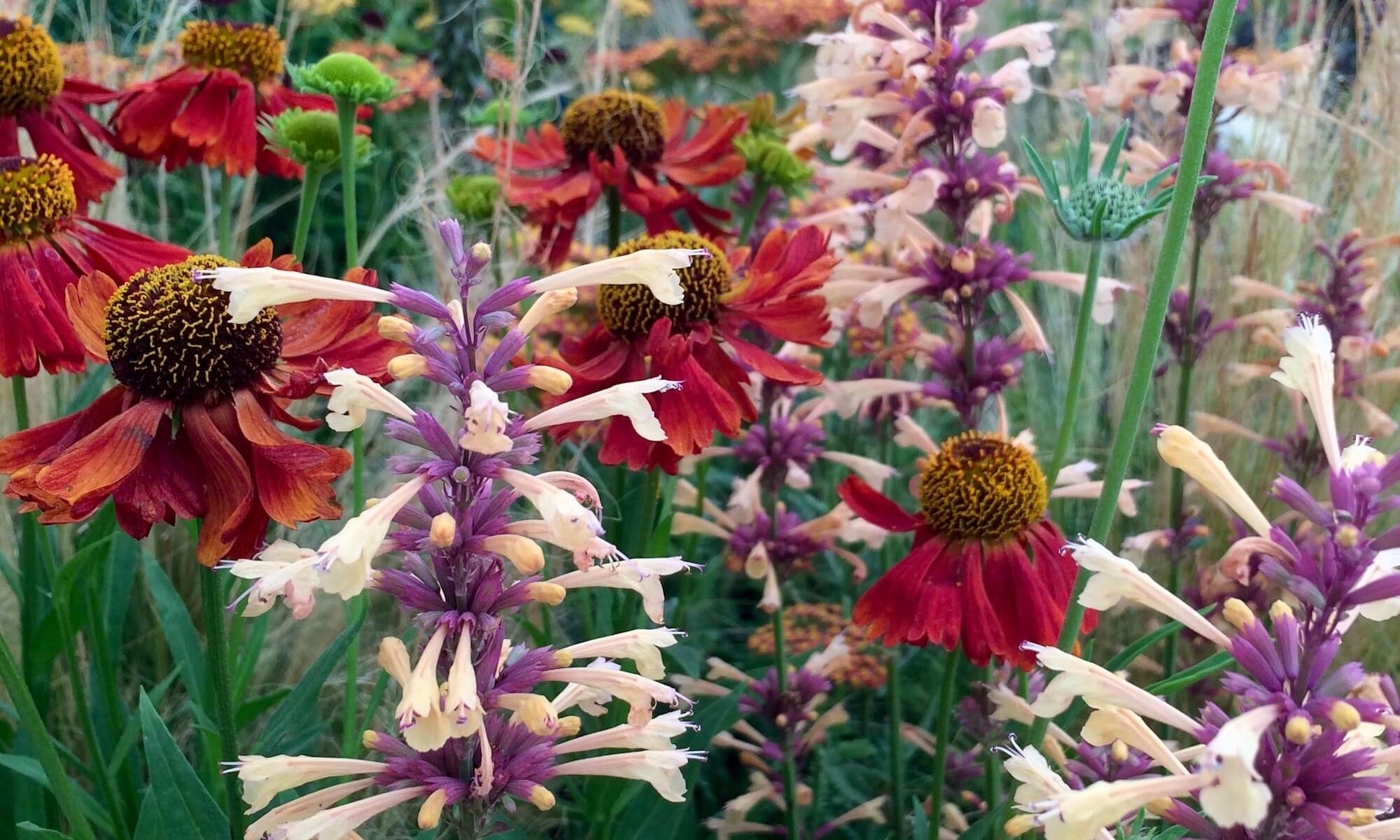
A’net by Brenda Jet was one of the installations we were able to get up close and personal with during our stay at Broomhill Art Hotel and Sculpture Garden in Muddiford, North Devon. The garden is a naturalistic one that runs alongside a stream, through a meadow and in the woodland of a steep-sided valley.
Brenda Jet collects plastic waste, such as tangled fisherman’s twine which she patiently cleans, unravels, then winds into neat balls of raw material. The finished sculpture is felt-like, colourful and textural.
Although A’net is on permanent display at Broomhill, the sculpture is a travelling one and can be moved into different positions. I’m glad this quirky, intriguing manifestation was the one we saw. I liked it a lot (and have since met more than one tree I thought would look good with an A’net on it).
Regular readers may remember this post about Sarah Emily Porter’s Anatomy of Colour which is also on permanent exhibition there. I still have quite a few more pictures from Broomhill to share when the mood takes me. 🙂

Great sculpture. Repurposed materials often makes really great art and sculpture.
I always find it shocking how much material an artist can acquire, although you’d think I’d have got the message about plastic waste by now.
Such detritus is a compelling medium. Besides the artistic impact of the sculpture, it reminds us of how much of such debris is discarded into nature.
Quirky and reallly cool. I agree with Timothy about repurposing.
Me too.
I like this wild woman!
All our woods need one, if you ask me!
I am thinking that it might be a little easier on the mind to walk up to this figure than to scroll down to its full impact on a blog post. Yikes. However, I think that the sculptor might enjoy thinking about the effect of the figure as it appears on the screen feet first, revealing itself gradually. Truly a mind-bender. Kudos to her for bending my mind, and also for using waste as her medium — that is very impressive indeed. I do remember the Anatomy of Colour, and I struggle with the challenge of seeing natural settings with unnatural impositions. It’s a good struggle.
I can imagine scrolling would have been a revelation for you, especially if you were expecting a flower. ‘In the wild’ you can approach A’net from different directions and the form changes, but I looked this approach best. I’m pretty sure I’ve felt like this from time to time but lacked the acrobatic skills to express it.
Oh, very good! You might have heard my laugh all the way over there!
Yes, that is what I thought, in both regards. It is certainly shocking. It is interesting that you note the challenge of natural settings with unnatural impositions. It is something that I notice in other exhibits as well. The Rodin Garden at Stanford is surrounded by simply landscaped areas that are kept at a slight distance from the sculptures, which really are at their best on their own. Some aspects of the ‘garden’ (simple landscape) environment suit the sculpture well, such as the sunlight and the weather, but the vegetation is really best only as a background that does not interact with it. Anyway, some other garden art seems to be a bit too intense to interact with nature so directly.
Holy cats! Spooky and impressive at the same time. I wouldn’t turn my back on A’net.
The garden was a little eerie at night. Figurative sculptures often have a strong presence.
I bet! I don’t think I’d be brave enough to visit at night. I have a pretty active imagination. 😉
You do.
Love it, thanks for posting!
I’m glad you liked it too, Simone.
I just love this, so creative.
It’s one of those artworks that stays with you, or at least it has with me. Our response to art is very personal, which is just as it should be.
Yes, it is personal.
Very disconcerting I think. My question is does the sculpture have a face?
Your question made me smile. I’d have had no idea except that you can see her facing forwards on the artist’s website. There is a face shape with a nose. Enough to count, I’d say!
Oh, that questions makes it even spookier.